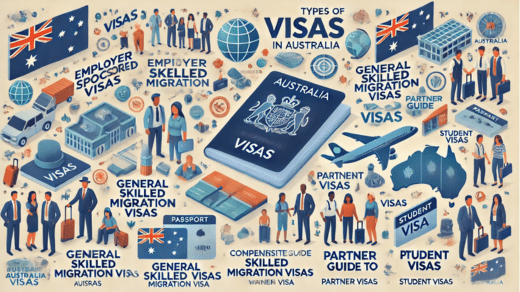Navigating Australia’s visa options can be complex, especially with the myriad pathways available to migrants looking to start a new chapter in the country. Whether you are an international student, a skilled professional, or planning to join your partner in Australia, understanding the different visa options is essential. Here, we’ll explore the different types of Australian visas, including https://australianmigrationco.com/employer-sponsored-visas/, general skilled migration visas, partner visas, and student visas, providing a comprehensive overview to help you make an informed decision.
Employer-Sponsored Visas
Employer-sponsored visas are designed to allow Australian employers to fill skill shortages by sponsoring overseas workers. One of the most popular options in this category is the Temporary Skill Shortage (TSS) Visa (Subclass 482). This visa allows employers to sponsor skilled workers to work in Australia temporarily. The TSS visa is often used to address gaps in industries like healthcare, IT, and construction, where demand for skilled labor exceeds the local workforce.
For those seeking a pathway to permanent residency, the Employer Nomination Scheme (ENS) Visa (Subclass 186) is an option. This visa allows skilled workers to live and work permanently in Australia after being nominated by an employer. There are three streams within this visa category: the Temporary Residence Transition Stream, the Direct Entry Stream, and the Labour Agreement Stream, each tailored to different circumstances and requirements.
Another important visa in this category is the Regional Sponsored Migration Scheme (RSMS) Visa (Subclass 187). This visa allows employers in regional areas to sponsor skilled workers for permanent residence, providing much-needed support to regions experiencing skill shortages.
General Skilled Migration Visas
For individuals who do not have a sponsoring employer, the https://australianmigrationco.com/general-skilled-migration-visas/ program is an ideal pathway to Australia. The GSM program is designed to attract highly skilled individuals to contribute to the Australian economy. It includes visas like the Skilled Independent Visa (Subclass 189) and the Skilled Nominated Visa (Subclass 190).
The Skilled Independent Visa (Subclass 189) does not require sponsorship by an employer or a family member. Instead, applicants are invited to apply based on their skills, qualifications, and ability to meet Australia’s workforce needs. The Skilled Nominated Visa (Subclass 190) requires state or territory nomination, which means you must be invited by a specific region to apply.
The Skilled Work Regional (Provisional) Visa (Subclass 491) is another important option under the GSM program, targeting individuals willing to live and work in regional areas. This visa aims to stimulate economic growth outside major metropolitan areas by encouraging skilled migrants to settle in less populated regions.
Partner Visas
If you are in a relationship with an Australian citizen or permanent resident, you may be eligible for a https://australianmigrationco.com/partnervisas/. Partner visas allow spouses, de facto partners, or fiancés to join their partners in Australia. The two main types of partner visas are the Temporary Partner Visa (Subclass 820/309) and the Permanent Partner Visa (Subclass 801/100).
Typically, applicants will first receive a temporary partner visa, allowing them to live in Australia while their permanent visa application is processed. The process is designed to ensure the genuineness of the relationship and allows applicants to transition smoothly to permanent residency if they meet the criteria.
Student Visas
Australia is one of the top destinations for international students due to its high-quality education system and diverse cultural environment. The Student Visa (Subclass 500) allows international students to live and study in Australia for the duration of their chosen course. It also provides opportunities for part-time work during the study period, enabling students to gain valuable work experience and support themselves financially.
A key requirement for the Student Visa is the Genuine Temporary Entrant (GTE) criteria, which ensures that the applicant’s intention is genuinely to study in Australia and not to use the visa for other purposes. After completing their studies, many students can transition to other visa types, such as a Temporary Graduate Visa, or apply for skilled migration pathways if they meet the criteria.
Choosing the Right Visa
With numerous visa options available, understanding which visa is the best fit for your situation is crucial. Factors such as your skills, employment prospects, family ties, and future goals all play a role in determining the most appropriate visa. While employer-sponsored visas offer a direct route for skilled professionals to work in Australia, the general skilled migration visas are ideal for those who want independence from employer sponsorship.
Partner visas provide opportunities for families to be together, while student visas open doors to education and potential career pathways. Consulting with a migration agent or legal professional is often advisable to navigate the complexities of Australia’s visa system and to determine the right path for your circumstances.

